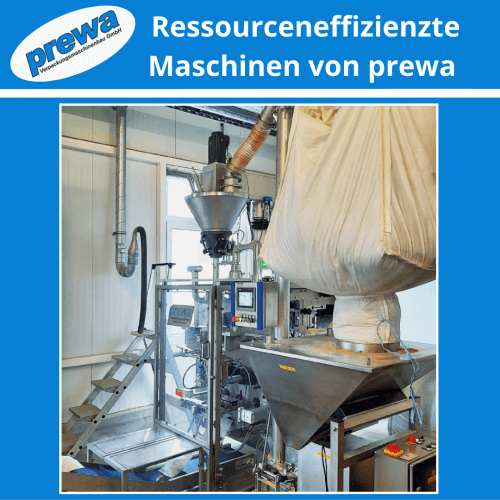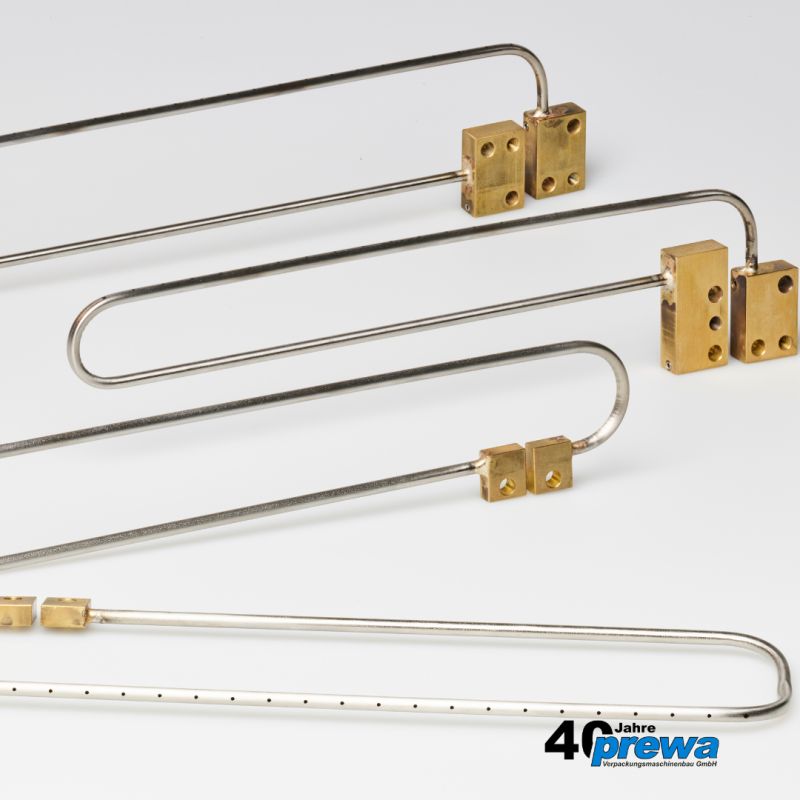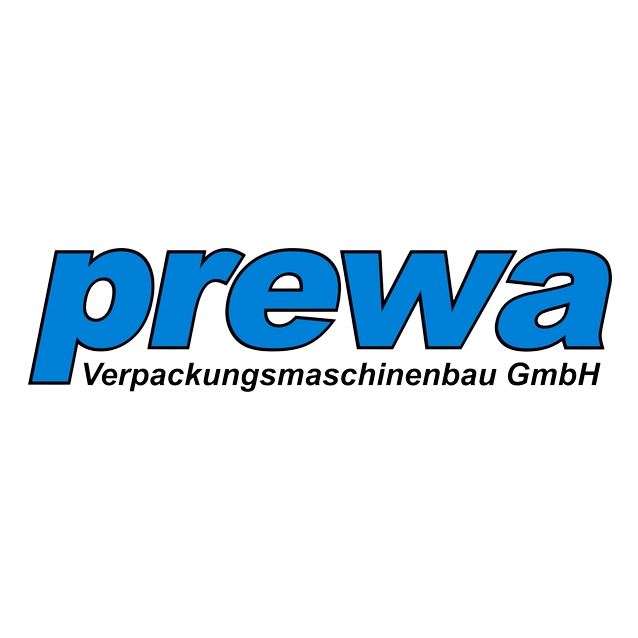Our business partner “SaluVet GmbH” in Bad Waldsee was recently awarded as one of the 100 companies for resource efficiency in Baden-Württemberg. A machine from the company prewa Verpackungsmaschinenbau GmbH was able to contribute to this award.
Initial situation and objective:
SaluVet GmbH, based in Bad Waldsee in Upper Swabia, produces supplementary feeds in the form of powders, among other things. These are intended to support and maintain the health of animals with effective substances from nature. Previously, 600 g of powder at a time was filled semi-automatically into composite cans made of paper, aluminum, plastic and tinplate.
The cans were delivered empty by the manufacturer and filled at SaluVet. After the powder had been used up, the cans were sent for thermal recycling. In order to produce more resource-efficiently in the future and also generate less waste, the filling line previously used for filling was to be replaced by a new one. SaluVet saw the replacement investment as an opportunity to switch to a different packaging material. A more resource-efficient design of the packaging not only leads to a reduction in the consumption of raw materials, but also offers the opportunity to realize savings in logistics processes and reduce the amount of packaging waste.
Challenge:
Packaging has the task of protecting the product from damage and loss of quality, which is why the new packaging was also not allowed to have any negative effects on the product. The selection of the new packaging was complicated by the fact that the product contains essential oils, to which the packaging must be neither reactive nor permeable. Otherwise, the product loses its effectiveness and no longer meets the demands of customers. For this reason, paper packaging material could not be chosen. To meet these requirements, the inner coating of the packaging is crucial.
Idea:
The composite can used up to now was to be replaced by a plastic bag which, on the one hand, protects the product and ensures quality and, on the other, is accepted by customers as a packaging material. This changeover should enable resource savings in several areas.
The move away from a four-material composite in can form was intended to reduce the consumption of raw materials and reduce the volume of waste generated by customers. The volume of transport from the manufacturer of the cans to SaluVet and on to the customer was also to be reduced. In addition, the filling process was to be changed from semi-automatic to automated filling by a bag filling machine, which would make this production step considerably faster.
Implementation:
The company decided to invest in a bag filling machine, which was designed in cooperation with Prewa Verpackungsmaschinenbau GmbH from Buseck. Instead of the previously used composite can, which consists of four materials and weighs 76.2 g, the 600 g of powder is now filled into a plastic bag with a paper label, which weighs 9 g. The plastic bag is filled into a plastic bag with a paper label. The plastic bag was designed in cooperation with the company Nietgen Verpackungssysteme from Monheim. The cooperation made it possible to take into account the special requirements for material selection and thickness and to keep the material usage as low as possible. The plastic tubing for the bags is delivered to SaluVet on a roll of 750 linear meters. By automating the process, the time required to fill the product has been significantly reduced. Ursprünglich konnten fünf Dosen pro Minute befüllt werden, die neue Anlage schafft nun 35 Beutel pro Minute. As a result, production time has been reduced fourfold while maintaining the same quality. As a side effect of the modernization, a modern and ergonomic workplace was created for the employees.
Savings:
Based on the annual filling of 43.2 t of supplementary feeds in 72,000 composite cans, 3 t of paper, 0.2 t of aluminum, 0.5 t of plastic and 1.7 t of tinplate are saved. For the same output quantity, 0.4 t of plastic and 0.2 t of paper are required annually for the production of the new packaging material. Comparing the two packaging solutions along their life cycle, the new packaging solution results in savings in greenhouse gas emissions of around 13 t CO2e.




